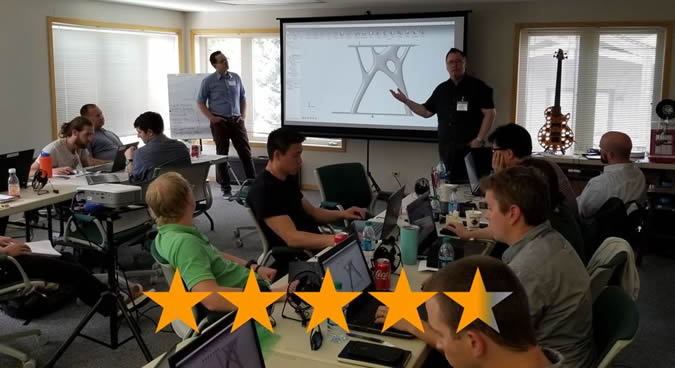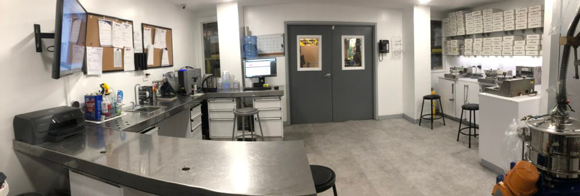This edition of the 3D Printing Industry news digest Sliced sees a variety of newly established facilities, vehicles powered by renewable energy, and the latest events in additive manufacturing. We also cover updates from PyroGenesis, Sinterit, Wohlers Associates and Airbus.
How to use SLS 3D printing
Polish 3D printer manufacturer Sinterit has launched a series of instructional videos surrounding two 3D printing powders that the company offers: the PA12 Smooth and the PA11 Onyx. The videos come as a response to queries that the company has received regarding the use of powders in desktop SLS 3D printers. Each video describes the properties and capabilities of each material, including a demonstration of objects that have been printed using the powders. You can view the instructional video for the Sinterit PA12 Smooth below, and head over here to learn about the PA11 Onyx.
PyroGenesis launches additive manufacturing powder arm
PyroGenesis, a Canadian metal powder producer and plasma torch specialist, is launching a new spin-off company titled PyroGenesis Additive, a division that will focus specifically on developing plasma-atomized metal powder for the additive manufacturing industry. PyroGenesis announced that its Board of Directors has approved the necessary steps to launch the new additive-focused arm. The news follows a recent update from the company that it had produced titanium powder at a rate over 25kg/h with its new NexGen Plasma Atomization System.
“The reason to spin-off PyroGenesis Additive is primarily to attract an investor base best suited to their unique value proposition, particular business operations, and financial characteristics,” explained Mr. P. Peter Pascali, President and CEO of PyroGenesis.
“A spin-off creates simplicity which in and of itself increases interest, all to the benefit of shareholders.”

3D printing helps realize renewable-energy vehicles
A renewable energy battery-powered demonstration unmanned aerial vehicle (UAV) that uses 3D printing technology has conducted its first flight with success. Known as LQ-H, the technical demonstration UAV was developed by Commercial Aircraft Corporation of China (COMAC), which also developed China’s C919 commercial airplane, featuring several 3D printed components as well. The LQ-H was made with 3D printed parts in order to lower its weight and pave the way for further applications of the technology. It uses a battery powered by hydrogen energy, which can be acquired through sustainable energy sources like solar power and wind energy.
Sono Motors, a German Electric Vehicle (EV) startup, has revealed it will be providing 3D printing files for the components of its solar-powered EV, the Sion, alongside purchases of the vehicle. This will allow customers to source parts for a repair from other companies that will 3D print the part for them, rather than the customer having to go direct to a Sono dealer. Furthermore, it may also enable the owner or a repair facility to manufacture replacement parts on-site with the correct 3D printing system and equipment.

In other news, Cincinnati Incorporated (CI), an Ohio-based build-to-order machine tool manufacturer, is racing its way into our hearts by donating a custom 3D printed “13.1” to the 2019 Flying Pig Marathon, a charity event established by non-profit organization Cincinnati Marathon, Inc. The 3D printed number represents the half marathon, which is 13.1 miles, and was made on CI’s Big Area Additive Manufacturing (BAAM) machine. CI already provided the charity run with a 3D printed “26.2” sign last year, and has now completed the set, with the 3D printed 13.1 to be unveiled at the 2019 event, and displayed at the finish line. CI is sponsoring the marathon run for the fourth time, which will take place on May 3-5 in Cincinnati at the Duke Energy Convention Center.
The latest events in additive manufacturing
Colorado-based additive manufacturing consultants Wohlers Associates has announced the latest of its Design for Additive Manufacturing (DfAM) courses. The company has run several previous DfAM courses, which aims to help engineers and designers effectively use 3D printing technologies, and has brought the courses to Australia, Belgium, Canada, South Africa and the U.S. The new DfAM course will take place in Hamburg, Germany, and is being supported by international aerospace company Airbus, as well as the ZAL Center of Applied Aeronautical Research.

euspen (the European Society for Precision Engineering and Nanotechnology) will be hosting its sixth Special Interest Group (SIG) meeting on Advanced Precision in Additive Manufacturing, in conjunction with the American Society of Precision Engineering (ASPE). The event will take place from 16-18 September 2019, in the Ecole Centrale de Nantes, Nantes, France. The SIG meeting aims to analyse and create a discussion on how to design additive manufacturing for precision with verifiable repeatability, in order to allow the technology to make the transition to a factory floor technology.
3D printing facilities in Cameroon, U.S., and India
There has been a series of new facilities opened this week that use 3D printing as part of their repertoire of advanced technologies. In Cameroon, a 3D printing facility has been inaugurated at the High-Tech Center of the National Advanced School of Engineering in the University of Yaoundé. The facility was built in collaboration with the Israel-based SELA Educational Initiatives Limited, and includes twenty-three 3D printing systems developed by Israeli manufacturers. Presented to the public on April 10th, the facility cost the State of Cameroon around FCFA 2.8 billion ($4,803,120).
Elcan Industries, a New York-based screening solutions provider, has also opened a new facility; a particle testing laboratory that includes a station for recycling additive manufacturing powders on its Hi-Sifter sieving machine. The company has established this additive manufacturing powder recycling program to help companies new to the technology handle and sieve metal powders using Elcan’s proprietary sieving technology, which will also help companies recycle the AM powders used.

Finally, the Ohio State University has launched an initiative with the Indian Institute of Technology Bombay (IIT Bombay) to establish a joint academic research center, which will enable interdisciplinary faculty research in additive manufacturing, as well as other advanced technology. The IIT Bombay-Ohio State Frontier Science and Engineering Research Center will be open to faculty and students from both institutions, with designated spaces at each respective campus for researchers to work together.
You can now cast your vote for the third annual 3D Printing Industry Awards. Help decide this year’s winners now.
Subscribe to the 3D Printing Industry newsletter for the latest news in additive manufacturing. You can also keep connected by following us on Twitter and liking us on Facebook.
Looking for a career in additive manufacturing? Visit 3D Printing Jobs for a selection of roles in the industry.
Featured image shows the Sono Motors Sion EV. Image via Sono Motors.

